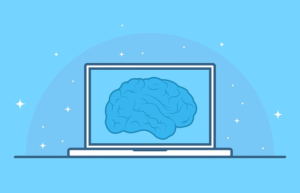
Best-Practices-for-Democratizing-Machine-Learning-to-Drive
Democratizing Machine Learning for non-technical users across the company can produce insights at scale and boost the bottom line.
Statisticians analyzed the complex and extensive data sets before the advent of Machine Learning (ML). Organizations now rely more and more on ML to complete this work at a larger scale, faster, and more accurately.
Business leaders today are looking for ways to scale ML and data science capabilities to increase profitability as more businesses transition to the cloud and manage big data.
Data science and ML platforms that can make this technology accessible to a wider range of users, such as business analysts, can help democratize Machine Learning. Forty-eight percent of respondents to a 2022 Gartner CIO and Technology Executive survey said they had adopted AI/ML or planned to do so in the coming 12 months. Given the lack of ML and data science talent at most enterprises, these platforms are therefore essential for ML operations.
Also Read: Five Machine Learning Project Pitfalls to Avoid in 2022
Here are some strategies for democratizing Machine Learning across the company, from standardizing processes, tools, and platforms, to modernizing the compute environment and utilizing automation in production.
Modernizing the Compute Environment
A modern computing environment utilizes the immediate provisioning of infrastructure and processing capacity offered by the cloud to positively impact each stage of the model development lifecycle. A high-performance data ecosystem for decision support with the capacity to verify accuracy and reliability as new data is added can be made possible by this processing power at scale. It can enable controlled access to data for analysis and the development of ML models to produce valuable insights. It can also scale models to handle massive and complex datasets concurrently.
Large-scale and complex data set analysis is carried out more effectively and democratized for non-technical practitioners due to the enhanced processing capacity made possible by the cloud.
Standardizing Platforms, Tools, and Processes
Engineers and data scientists can more quickly find, access data, and expand on the foundations developed to deploy ML models by standardizing processes, tools, and platforms. Customized model pipelines can be unstable and ineffective, which hinders scaling and prevents non-expert practitioners from using ML. Standardization entails bringing teams onto the same stack, emphasizing collaboration, dismantling silos, and giving priority to reusable parts and frameworks across all Machine Learning initiatives.
Also Read: How Enterprises can Keep Machine Learning Models on Track with Crucial Guard Rails
Creating foundational platforms can help with practically every step of creating, deploying, and maintaining models by making ML efforts well-managed, adaptable and scalable. In fact, so that models may be more readily audited and duplicated, common platforms can store execution and model training data, like outcomes and parameters, in a searchable way.
Model Training and Monitoring
Automation can help businesses in achieving continuous model prediction service delivery once ML models are in production. Automating ML model training and monitoring can help teams decide when retraining a model is necessary and ensure a model is working properly when it is deployed into production. Engineers can have faith in consistent repeatability and maintenance thanks to this automation.
It’s crucial to have human oversight of automated model training and monitoring within an enterprise. A centralized regulatory body can coordinate the controls, processes, monitoring, and technology infrastructure to scale ML responsibly and provide better transparency across development activities.
By enabling technologists to focus on model and feature development rather than arduous and manual issue resolution, automation also enhances the developer experience.
It’s critical to adhere to best practices and support continuous training and learning as businesses start to scale ML across the company. The ability to conduct analysis and produce insights at scale can be made available to a large group of non-technical users by democratizing Machine Learning. This can have significant business value for the entire organization.
Check Out The New Enterprisetalk Podcast. For more such updates follow us on Google News Enterprisetalk News.


